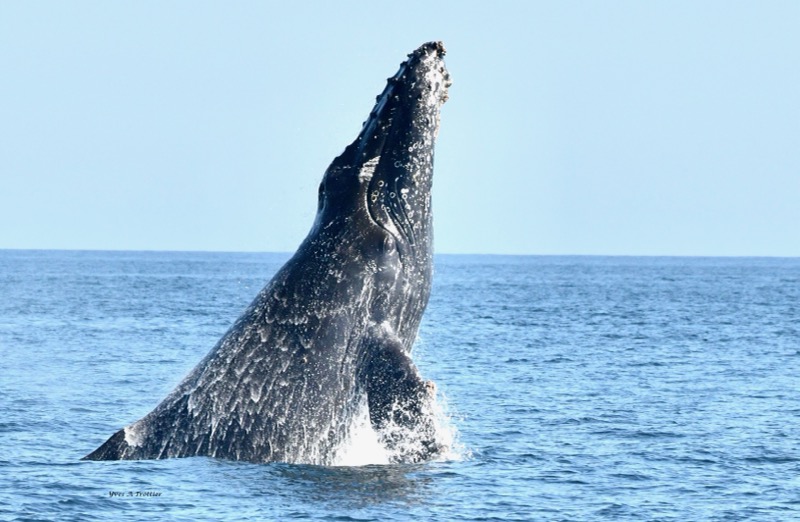You thought Orcas were big? Humpback Whales can grow up to 16 meters long! Even just their blows can measure as high as three meters. Over the past 40 years since commercial whaling was banned in the North Pacific, Humpbacks have been making a comeback in the waters surrounding Vancouver Island. These long-distance migrators show great fidelity to their favourite feeding spots along the BC coast, typically appearing during the months of July to November. Around the waters of Vancouver Island and off the Washington coast, we share our fragile marine ecosystem with about 200-400 Humpbacks. We can identify individuals by the markings on the underside of their tail flukes – this is similar to how fingerprints are used to identify humans.
Humpback males sing long, complex songs as part of their mating strategy, and possibly as a way to organize their social hierarchy. Humpback calves will live with their mothers for only about a year before they hive off and go their own way. Humpbacks aren’t as social as Orcas, and don’t live in any sort of long-term social grouping.
Humpback Whales are named because of the distinctive hump that rises on their backs when they dive. Humpbacks are filter feeders, like other baleen Whales, they gather up their diet of krill, herring and pilchard in a huge mouthful and then push the excess water out through these sieve-like filaments of keratin. One of the coolest hunting strategies in the ocean belongs to the Humpback: “Bubble netting” occurs when one or more animals swim in a circle, releasing a thin stream of bubbles. The bubbles form a wall, confusing and confining the whales’ prey into condensed groups. When the bubble net is complete, the whale swims through with its mouth open.
Of course, Humpback Whales have to be careful when Orcas are near; Humpback snacks are a favourite of the Killer Whale! Other, human-induced threats to the Humpback Whale are habitat degradation, entanglement in fishing gear and ship strikes.
When you’re on board Marauder IV, be sure to come down and listen to our naturalists’ talk! We’ll pass around a sample of whale baleen so you can see (and feel) for yourself the unique mechanism these Whales use for gathering their prey.
